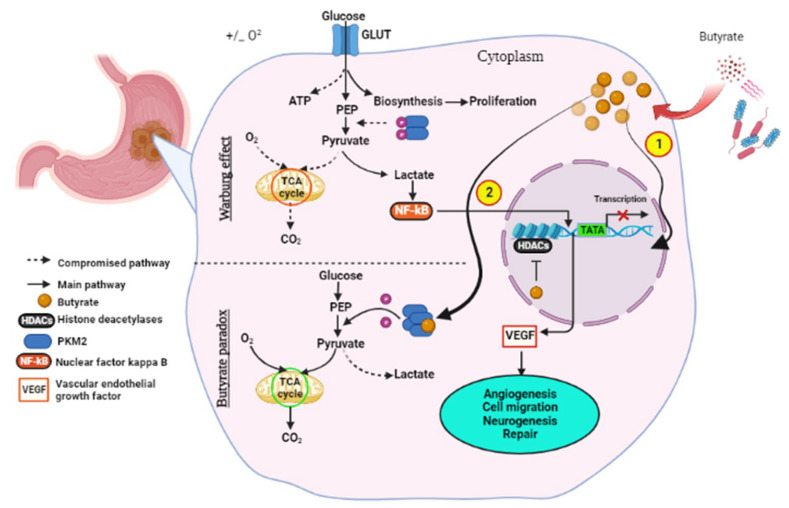Figure 6.
The anti-cancer effect of butyrate. Butyrate molecules are produced through the fermentation of fiber by bacteria. The molecules accumulate in cancerous gastric epithelia as the Warburg effect addicts these cells to the glucose metabolism and the increased production of lactate. Lactate triggers events that lead to VEGF upregulation, subsequently leading to cancer progression. Butyrate helps fight off cancer through the Butyrate Paradox phenomenon in two ways: (1) by travelling to the nucleus where it functions as a HDAC inhibitor which terminates cell cycle progression through altered gene expression; and (2) by reversing metabolism from anaerobic glycolysis to conventional OXPHOS through binding PKM2, altering it to a more active dephosphorylated tetrameric form. This favors energy production through the Krebs cycle. VEGF—vascular endothelial growth factor, HDAC—histone deacetylase. Created with BioRender.com. (accessed 27 September 2022).

